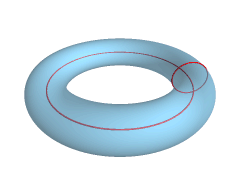|
(2018
midterm assignment) Model Student Midterm answers 2018 #1: Long Essays (Index) |
LITR 4328 |
 |
Anne Ngo
3 October 2018
The Interpretations of Nature in
Romantic Literature
Similar to humans’ constant interaction
with nature, nature appears prevalently in the American Renaissance. The motif
of nature in this period encapsulates three symbols of the Romantic style: the
Romantic ideal, the spiritual, and the gothic. Susan B. Warner’s
The Wide, Wide World showcases nature
as its most ideal state, while Ralph Waldo Emerson’s
Nature sees it as the path to
spiritual meaning. On the other hand, Washington Irving’s
The Legend of Sleepy Hollow places
nature as the setting for the gothic genre. Although these representations of
nature seem vastly different from one another, nature in Edgar Allan Poe’s
“Romance” incorporates both the romantic ideal and the gothic. Thus, the motif
of nature shows that despite the symbolic differences, they work as
characteristics of Romantic literature.
Nature embodies the Romantic ideal.
During the American Renaissance, the idealization of nature served as a
characteristic of the Romantic Movement (Objective 1a; Term/Themes:
Romanticism). This idealistic view of nature is seen in
The Wide, Wide World, in which the
“sun” shines its “mellowing rays” and meets “every slope and ridge with a rich
warm glow” (15.16). The sun’s “mellowing rays” creates a soft, dreamy image, as
if they were blurred in a painting. Matched with its “rich warm glow,” this
image portrays nature in its most idealized form. Although there are “leafless
trees” and “stern jagged rocks” in the scene, they are still “wrapped in the
haze” (15.16). Despite the more realistic description of the landscape, the haze
creates a dream-like view of the natural world. Therefore, the narrator sees
nature with an idealistic lens.
Additionally, nature represents the path
to spiritual meaning. In his essay Nature,
Emerson states that in order for a person to “go into solitude,” they must
“retire as much from his chamber as from society” (6). Here, Emerson
incorporates a characteristic of the Romantic genre: an individual in nature or
separate from “society” (Objective 1a). He further recommends the individual to
“look at the stars,” if they must “be alone,” as “the rays” from the “heavenly
worlds” will “separate between” them and what they “touch” (6). By looking at
the “stars,” Emerson suggests that nature is a guide to a person’s spiritual
path. In order words, the combination of solitude and nature creates a greater
connection between the individual and the spiritual. In addition, the mention of
the stars’ “rays,” shining from the “heavenly worlds” further implies that
Emerson sees nature as a connection to spiritual meaning. Thus, nature can
represent the path to a spiritual connection in Romanticism.
On the other hand, nature is also
portrayed as the setting for the gothic style of the Romantic period. In the
woods of The Legend of Sleepy Hollow,
the night “grew darker” and the “stars seemed to sink deeper in the sky;” the
“clouds occasionally hid them from [Ichabod’s] sight” (56). Although the “stars”
seems to be gradually dimmer, it is the “clouds” that “occasionally hid[es]
them” from the main character’s view. The clouds, therefore, create darkness and
light to the scene, as they “occasionally” block the stars from their shine.
Thus, the woods showcase the light and dark contrast of the wilderness gothic,
both characteristics of this literary style (Objective 1d; Terms/Themes: The
Gothic). Furthermore, through this scene, Ichabod “never felt so lonely and
dismal” (56). Contrasting this isolation to
Nature, solitude feels lonelier and
drabber than the spiritual connection that an individual may feel when alone in
nature. Thus, nature in Romanticism not only represents a guide to a spiritual
meaning, but also a set piece for the gothic style.
While these three representations of
nature seem vastly different, they can also be incorporated to showcase Romantic
characteristics in a single literary text. Demonstrated in Poe’s “Romance,” the
poem utilizes two Romantic representations of nature: the romantic ideal and the
gothic. From the first stanza, the text characterizes Romance, stating “with a
drowsy head,” it “loves” to “nod and sing” among the “green leaves” (1.1-1.3).
This characterization portrays an ideal image of Romance and nature. Its
diction, such as “a drowsy head,” connects to the dreaminess of Romanticism,
while the “green leaves” showcases a healthy, ideal picture of nature: vibrant
and alive. Moreover, the poem describes the passing of time as the roll of the
“tropic storms” among the “troubled sky” (2.2-2.4). This comparison of time as
the turbulent forces of nature illuminates the gothic style of the Romantic
period. Thus, Poe’s “Romance” provides an example of how literature from the
American Renaissance can blend two seemingly different Romantic characteristics
into a single text.
Through an examination of nature in
these texts, I have a better understanding of the motif in the American
Renaissance. Nature represents some of the characteristics that define the
Romantic period: Warner’s The Wide, Wide
World showcases an idealistic natural world, Emerson’s
Nature portrays it as a path towards
an individual’s spiritual meaning, and Irving’s
The Legend of Sleepy Hollow uses
nature a the backdrop for its gothic style. While the American Renaissance
displays different interpretations of nature, it can also be implemented into a
single text. Poe’s “Romance” exemplifies the blend of the romantic ideal and the
gothic. Thus, these Romantic characteristics work to represent the American
Renaissance, showing the many movements, styles, and genres that lived in this
period.
 |
 |
 |
